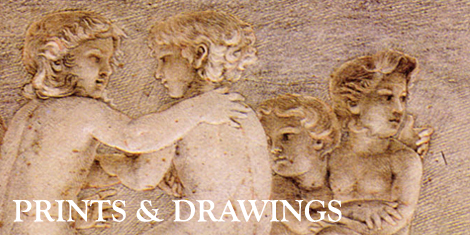
Classical Study from the Baroque
Peter Paul Rubens
Study for the Laocoön Group, 1604–08
During his stay in Italy from 1600 to 1608, Rubens made numerous study drawings on the basis of classical sculptures, including the Laocoön Group. This marble statue dating from the first century CE (a copy of a Greek bronze) had only been discovered in a Roman vineyard in 1506, and from then on was regarded by the artistic and scholarly community as the most important antique sculpture of all. The group of figures, today in the Vatican Museums in Rome, depicts a dramatic scene from the story of the Trojan War: after the priest Laocoön had warned the Trojans against accepting the Greek gift of a wooden horse, he was punished by the goddess Athena: she despatched two sea serpents to kill the priest and his two sons.
The Cologne sheet shows a frontal view of the father and one of the two sons in their desperate struggle with the serpents who are entwining themselves about them. The serpents themselves are only hinted at. It was above all the vivid composition of the bodies and the emotions visible in the face of Laocoön that served Rubens as a model worthy of copy. At the same time he made the texture of the marble come alive with the help of black chalk. Further studies by the artist of the Laocoön Group can be found today in the graphics collections in Milan and Dresden.
Peter Paul Rubens
Siegen 1577 – 1640 Antwerpen
Study for the Laocoön Group
1604/1608, black chalk on vergé paper, 482 x 375 mm
Old holdings
WRM Z 5889



